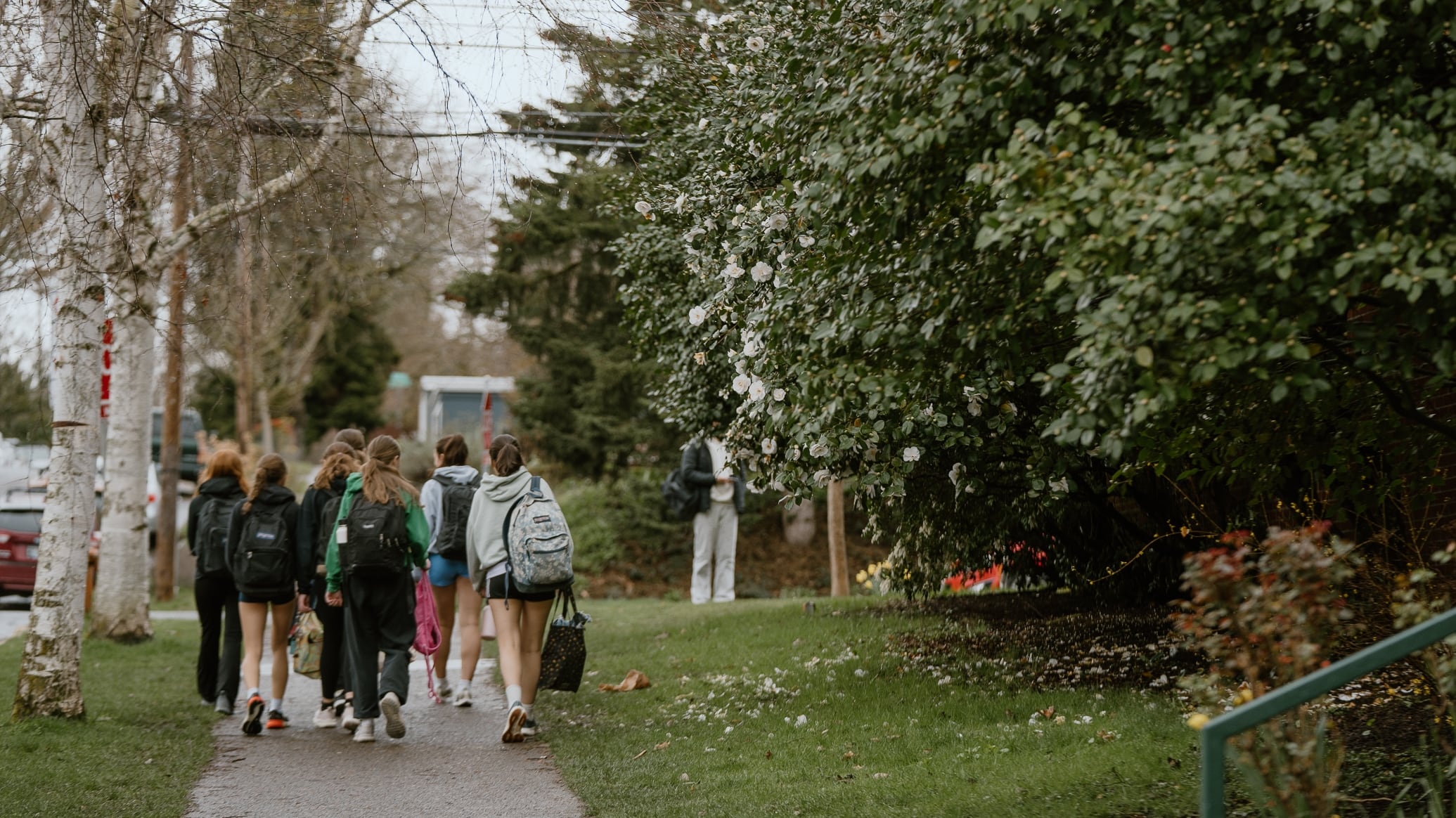Judging by the throngs of protesters in the streets on recent weekends, a lot of Portlanders wish they could strike a blow against President Trump’s assault on America’s institutions.
In a way, they can—by voting this May for a better school district.
The federal backbone of the U.S. education system is under attack, as the White House threatens school funding in a war on diversity and dissolves critical national student aptitude tests. Education experts have told us it will be more crucial than ever for local school districts to step up to the plate and become responsible for their students’ outcomes.
But in Portland Public Schools, Oregon’s largest school district, student outcomes have continued to flatline after tanking during the pandemic. Chronic absenteeism is still at 36.9%, and Black, brown and Indigenous students still struggle to keep up with their white counterparts.
That’s where your vote can spur change.
Voters still reeling from last November can breathe a sigh of relief; the ballots arriving in mailboxes starting today contain no ranked choice voting and won’t require you to study candidate lists up to 30 names long. The major choices on the ballot are fairly simple: two or three candidates running for each of four open School Board seats, and a very large tax measure to fund school building construction.
Still, it doesn’t hurt to cram. For the past three weeks, we invited all the School Board candidates to our office for conversations with our editorial board, interviewing those in competition for the same seat together in the same room. We asked them about some of the hottest topics around Oregon education right now, including the relationship between increased school funding and accountability, and navigating declining enrollment. You can watch the videos below.
We also brought in a panel for the major item in this election: Measure 26-259 would allow PPS to issue $1.83 billion in bonds to repair aging buildings and modernize three high schools. In a district where the average age of buildings is 79, a plan for how to fix them is badly needed.
Fixing what’s broken in this country starts at home—and the choices we make in this election will impact young people who will be around long after MAGA hats are a historical artifact. We’re encouraged to see so many people eager to try and be a part of the solution. Here’s how we suggest Portland move forward.
Portland Public Schools Board, Zone 1
Christy Splitt
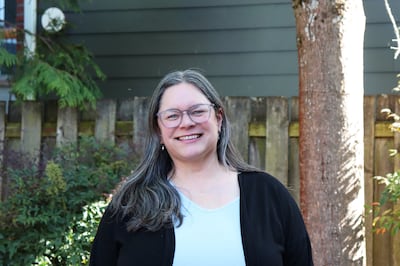
Budget wonk Andrew Scott represented this Southwest Portland zone for about six years, leaving a legacy that includes the latest bond measure. In November, Scott announced he was moving out of Zone 1, requiring that he vacate his seat. Three applicants sought appointment to take his place until the election, and we think the ultimate appointee, Christy Splitt, should serve the remaining two years of Scott’s term.
Splitt, whose day job is government relations coordinator for the Oregon Department of Energy, has been busy so far in her four months on the School Board. She’s used her legislative experience to lobby Salem for more school funding, and helped build a framework to reduce high school costs in the upcoming bond. We’re not convinced those frameworks ultimately drove down the costs much, but the idea was sound.
We think Splitt’s got a solid grip on the challenges plaguing PPS, including declining enrollment and stagnant academic outcomes. Like many School Board candidates before her, Splitt says her top priority is to start improving achievement results for students of color. She says she’ll tackle the problem by examining teacher retention—she says data shows schools that perform better also have some of the highest rates of retention. We think that’s a promising place to start.
We do wish she’d show a little more spine. For example, she shrugged off the role of test scores in understanding how students are faring. While they certainly don’t tell the whole story, test scores can be key indicators of a school system’s health. She also didn’t have much to say on how she would have handled the 2023 teacher strike differently, apart from noting she’d have warmer relations with teachers.
While we may not agree with her on everything, Splitt is the clear choice in this race. She’s been an active parent in the district, serving as both the president and secretary of the Hayhurst Elementary School PTA. She’s had firsthand experience with young kids who experienced pandemic-era learning, and seen the effects of budget cuts at her own school’s door.
Ken Cavagnolo, an astrophysicist turned business executive, brought some refreshing ideas about how to lead a district from an outsider’s perspective. We appreciated that he pointed out an honesty gap in the district between high graduation rates and low academic performance. But he’s not collecting endorsements, has admitted he’s running more to get his message out than to win, and has no connections to PPS. We’ll go with Splitt.
Splitt’s favorite childhood snack? Microwaved Minute Rice with lemon pepper.
Portland Public Schools Board, Zone 4
Herman Greene
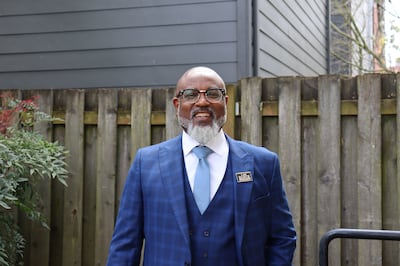
Herman Greene has earned a reputation at School Board meetings as a disruptor. Often launching into long, impassioned speeches about worsening student achievement or, more recently, concerns around skyrocketing costs for the three high schools slated for remodel in the May bond, he’s brought some uncomfortable truths to a public forum.
Greene is running on a platform similar to the one he ran on four years ago to clinch this North Portland seat, centering student achievement and trying to improve outcomes for students of color. During his years on the board, he’s also become a staunch advocate for school funding.
Greene, a pastor at Abundant Life PDX, has always spoken out about the injustices he’s seen, even if he hasn’t always had solutions to fix them. That’s a start, because we think PPS needs greater accountability. And we think it takes some nerve to call out the district for proposing some of the most expensive high schools in the nation, especially when it makes waves so close to a bond election.
To be fair, we haven’t always been impressed with Greene. He’s come to many a School Board meeting unprepared, asking questions whose answers lay in packets he should have reviewed. He has sometimes been dismissive of student experiences, in a way that feels like the cliché of a “tough love” dad who isn’t listening.
But we’re not confident that his opponent would be an improvement. Rashelle Chase-Miller is statewide program director of SMART Reading, an organization that helps children develop literacy skills and promotes a culture of reading. On literacy, Chase-Miller proves formidable and more knowledgeable about specific strategies that could help children succeed. She also has valuable insight into special education funding that outpaces Greene’s.
We’re skeptical Chase-Miller would use her role to keep PPS accountable. She told us she doesn’t think it’s fair to hold teachers and the district responsible for poor outcomes when the state isn’t fully funding education, and when asked if she had any outstanding questions about the bond, she didn’t have any around its financials. We’re also troubled she couldn’t demonstrate more independence from the Portland Association of Teachers, her biggest backers, apart from saying she thought teachers who engaged in inappropriate conduct with students should be fired.
It takes a lot to unseat an incumbent, especially on a board whose members will all be relatively new. Greene’s got four years of experience navigating school governance. If he’s reelected, we hope he’ll use his next four more wisely.
Greene’s favorite childhood snack? His grandmother’s peanut butter and jelly sandwiches, toasted with a little butter in the middle.
Portland Public Schools Board, Zone 5
Virginia La Forte
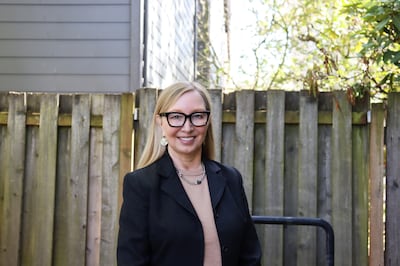
In the race for a zone that covers much of Northeast Portland, Virginia La Forte, a brand strategist by day and a longtime parent advocate, should have your vote.
La Forte has a long history of advocacy in the district. More than a decade ago, she helped draw attention to lead contamination at Alameda Elementary School, resulting in $150 million in PPS’s 2017 bond for much-needed health and safety improvements. In 2018, she helped advocate for the creation of the environmental technical advisory committee at Harriet Tubman Middle School. That committee partnered with Portland State University to conduct an air quality study, which ultimately resulted in $10 million for filtration at the school.
Most recently, she’s led a campaign to install lights and seats at the Grant Bowl, the only football field at a 6A high school in Oregon without lights. The Grant Bowl Community Coalition is now raising $500,000 to make it happen.
La Forte has a history of getting things done when she throws her weight behind them. Her deep connections to the PPS community, including through two sons (one of whom still attends a school in the district), means her advocacy is personal. She’s served on community engagement committees for past bonds and understands the value of fiscal stewardship.
She was candid in her endorsement interview that she isn’t enchanted with the direction the district is headed. Her top three priorities are to turn around chronic absenteeism, repair crumbling infrastructure, and raise low reading proficiency rates. And La Forte willingly acknowledged that declining enrollment is a barrier for the district; she wants to start a conversation about allocating more bond funds to elementary and middle schools. The School Board could use her presence.
Jorge Sanchez Bautista, a McDaniel High School student who has been a community advocate in the Cully neighborhood and an adviser to the Oregon State Board of Education, is running to bring a student voice to the School Board. He knows firsthand what it means to have a PPS education, and rightfully points to federal challenges the district might have to face in the coming years. We commend his drive for public service and hope he will run again, but La Forte’s years of accomplishment make her the clear choice.
La Forte’s favorite childhood snack? Mom’s oatmeal raisin cookies, except with chocolate chips and sometimes no raisins.
Portland Public Schools Board, Zone 6
Stephanie Engelsman
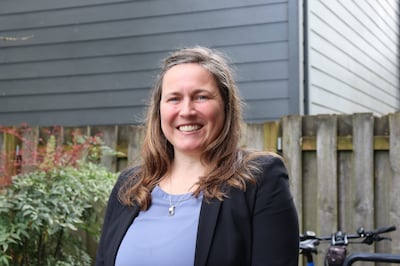
This race for a Southeast Portland seat presents the toughest choice for School Board, between Stephanie Engelsman, a longtime public defender, and Rob Galanakis, a Bike Bus PDX leader. Both are qualified and have deep ties to PPS schools, with younger children and PTA service. We recommend Engelsman, whose years of experience in juvenile justice have put her close to the heart of some of the school district’s biggest problems.
Among her top priorities are reducing chronic absenteeism; ensuring fairer access to the arts, apprenticeship work and college prep courses; and taking greater fiscal responsibility. We hope she’ll take some time to mull the last point, because her answer on how to approach the rebuilding of high schools ignored the declining enrollment trends that are such a cause of concern for the district.
But Engelsman is committed to closely reading board materials and asking the hard questions—no different from her day job. That’s valuable, especially because board member Julia Brim-Edwards—who currently holds this seat but is not seeking reelection—is known for her attention to detail.
What impressed us most is that she’s open to changing her mind based on evolving evidence. One example? She says she started her campaign with caps on class size as a major priority (education experts have told WW such caps are often expensive for marginal improvements in student outcomes), but has since come around to seeing there are bigger issues to focus on. She also emphasized there may be alternatives to class-size caps that will still prioritize schools with greater need (Title I schools already have class-size caps). We appreciate a leader who’s flexible and willing to explore creative solutions.
Galanakis impressed us with his financial knowledge of the upcoming school bond, testifying against it in January before ultimately giving it his support. He has some interesting ideas about how the district must work in tandem with the city on a track for Portland’s regrowth. But while we admire his desire for a more bikeable and walkable Portland, that doesn’t crack the top 10 issues that PPS currently faces.
Also running is Simone Crowe, a disaster resilience consultant and recent graduate of a massage therapy and bodywork school. She had strong knowledge about climate education, but ultimately joined the race too late to run a serious campaign against two strong contenders. In a close contest, Engelsman is the right choice.
Engelsman’s favorite childhood snack? Vanilla ice cream, in a cone.
Ballot Measure 26-259
Portland Public Schools bond
No
The big-ticket item on the May 2025 ballot is this construction bond referred to voters by Portland Public Schools. It is the fourth bond the district has referred since 2012, in a long-term campaign to overhaul its nine high schools and upgrade aging elementary and middle school buildings. At $1.83 billion, it is by far the most expensive school bond in state history (the current record is also held by PPS: $1.2 billion in 2020). But it would not increase your property taxes. A district homeowner would still pay an estimated $2.50 for every $1,000 of assessed value, which matches the rate of the last bond.
The largest cost driver in this bond—$1.15 billion, or 63% of the total—is a rebuild of the three high schools still left on the district’s to-do list: Cleveland, Jefferson and Ida B. Wells. (Jefferson already has $366 million to spend from the 2020 bond, but shovels still haven’t hit dirt, and the district says it needs more money). District officials have said any money left over from these rebuilds would go into unspecified elementary and middle school upgrades. Another $190 million would be set aside for other deferred maintenance, again focused on middle and elementary schools, and the rest would go to items such as curriculum, athletics improvements, and technology.
Any cost estimate that starts with the letter “B” is sure to make some voters spit out their coffee. But make no mistake: Oregon’s largest school district must spend this much money and, in fact, should be asking for more. Classrooms are in shameful condition—and some school buildings are seismic death traps.

Over the past year, we’ve heard moving testimony from dozens of students who have described schools where tiles fall from the ceiling, entrances aren’t accessible to people with disabilities, and HVAC systems don’t work. It’s unjust that students should be subject to such conditions while trying to learn. We’ve reported on how 19 schools built of unreinforced masonry, at all grade levels, could collapse on kids during a Cascadia subduction zone earthquake. Parents able to remove their children from such conditions will. That’s why improving facilities is an existential question for a school district that must reverse trends in student achievement and declining enrollment.
The undeniable need is why not a single member of the School Board, or any candidate running this cycle, dares to oppose the bond.
But that’s also the danger: The urgency, and elected officials’ fear of disappointing parents, has enabled PPS to ask voters to write what is perilously close to a blank check.
For months, WW has reported on a bond process that has lacked the transparency and community engagement necessary for success. The size of this bond also makes the stakes higher: If it passes, the School Board has indicated it won’t propose another bond for eight to 10 years. That means the district must be meticulous about how it spends what voters send it. The public deserves to know the district will use this massive sum of money to address its facilities’ most critical issues.
We don’t know that.
In previous bond proposals, PPS precisely listed how much money would go toward everything from HVAC systems to Benson Polytechnic High School. Now, we have a bond largely divided into two pools of money: $1.15 billion for shockingly expensive high schools designed to serve far more students than the district has or expects to get, and $190 million for deferred maintenance whose uses remain undefined.
In our endorsement interview, district officials told us the decision to keep parameters loose was intentional. “We’re hoping we can touch as many facilities as possible,” PPS Superintendent Dr. Kimberlee Armstrong said. To a degree, that makes sense. It’s hard to predict when a roof will leak. But there’s a point where wiggle room becomes sloppiness.

When pressed on how much money would go toward what many see as one of the most critical repairs—19 URM buildings that will cost the district about $126 million to retrofit—no one could provide a straight answer. There’s been no indication which schools stand to benefit from the deferred maintenance pot.
District officials assured us they’d present a clear spending plan once the bond passes. That plan, they say, would be crafted in conversations with the community alongside conversations about which elementary and middle schools should be closed amid declining enrollment. That process feels backward, and to a degree deceptive to parents who might vote for the bond only to see their child’s neighborhood school shuttered instead of repaired. PPS must present its voters with more honest messaging.
It also needs to show some actual effort toward frugality with the high schools. As WW has reported, the district’s own enrollment projections suggest PPS doesn’t need all three high schools in the bond—and certainly doesn’t need all three to be so large. Yet, months of pledges to cut down on what would be some of the most expensive high schools in the nation have resulted in, at best, less than 5% savings from the costs of all three.
That’s the reason, even as the School Board urges voters to pass the bond, members are sniping at each other about the high schools’ price tags. Other districts around the country have rebuilt high schools at half the cost, yet PPS has not been able to meaningfully lower its estimates. Worse, the district is trying to add $100 million to the cost of one high school—Jefferson—with a current enrollment of 459, less than a third of the capacity it plans to build for. (In our endorsement interview, district officials told us they plan to rebuild Jefferson whether this bond passes or not.)
The bond’s lack of a community stakeholder advisory group, dedicated public comment, and even stifled discussion on the School Board are other reasons for alarm. In short, there’s a headlong, out-of-control feeling surrounding this bond—the sensation of a district throwing good money after bad in a panic that it will keep losing students, at the expense of a clear-eyed appraisal of where the greatest needs are.
Little of this is the fault of the new superintendent. Nearly 11 months since returning to Portland, Armstrong has begun ripping off Band-Aids, and her leadership helped bring the bond down from a whopping $3.1 billion back in June. We believe she’s the right leader to conduct an honest discussion about the trade-offs PPS must make to fund its most urgent needs.
There is precedent for hitting the pause button—fairly recent history, in fact.
In May 2011, PPS proposed a bond that narrowly failed at the ballot box, by less than 1 percentage point. That bond was broad and undefined at a time when there was still lingering economic uncertainty and frustration. It mirrored the weaknesses of this year’s bond. But the 2011 bond’s failure also meant that when the district presented a new draft in 2012, it learned from the mistake of trying to do everything and homed in. School advocates who’d rallied to oppose the 2011 bond dropped everything to campaign in support of the 2012 one.
The 2012 PPS bond successfully modernized three high schools: Franklin, Grant and Roosevelt, on budget and a model of what the district can accomplish when it focuses. As School Board member Bobbie Regan said back then, “It does feel so much better than the last time we went out, when we felt like we were pretty rushed and put something on the ballot without really taking the time to really understand what our community was looking for.”
We believe voters should again hold PPS to that standard. They should approve a bond only when it has met the following conditions:
• A spending plan for the high schools that either meaningfully lowers the costs of each or shows the math behind why schools in Portland will cost so much more. The district must also provide a justification, backed by enrollment figures, for rebuilding all three, or consider a consolidation, however painful that might be.
• A clearly articulated strategy for prioritizing the most dangerous buildings, with line-item budgets for seismic upgrades and removal of other environmental hazards like outdated HVAC systems.
• The start of a frank conversation with parents about which elementary and middle schools will be closed.
Our rejection is not meant to be an out-of-hand dismissal of the district’s construction plans. We share district leaders’ desire for a Portland that attracts families with successful, new schools. But the district owes it to voters to present a detailed plan for where their money will go, and it owes it to its students to ensure that every dollar goes toward needed upgrades. It’s possible that a more comprehensive approach would lead to a bond that’s more expensive. That’s fine—if it’s also more rigorous.
But Portland voters deserve better than being asked to close their eyes and take a leap of faith. This is the last chance to get this decision right. Vote no and ask the district to raise the bar a year from now.
WW‘s editorial board comprises Anthony Effinger, Joanna Hou, Aaron Mesh and Sophie Peel.
